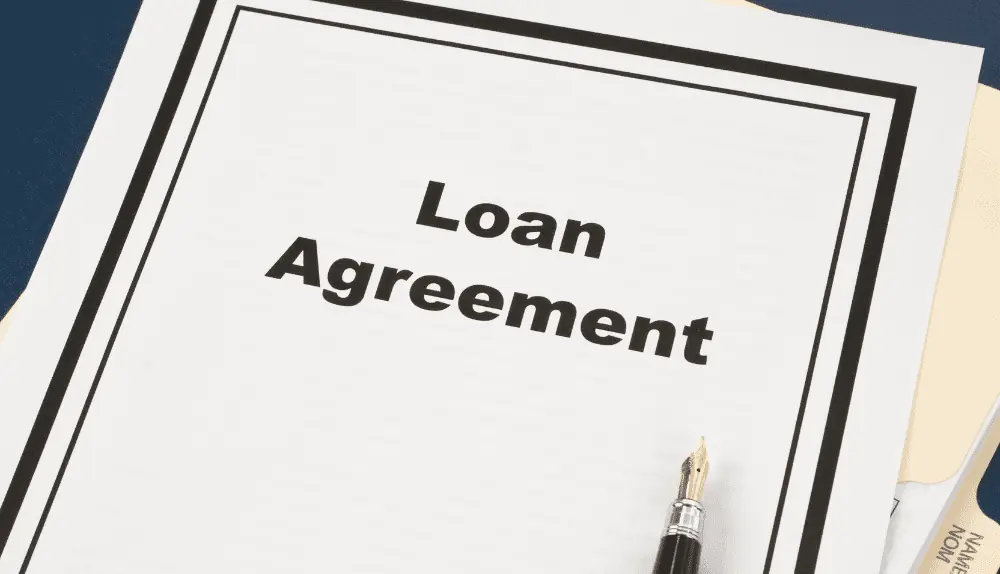Obtaining funding options or business loans is critical for success as an entrepreneur. However, hidden clauses in loan agreements, such as the acceleration clause, are frequently overlooked. Understanding what is an acceleration clause is critical to the success of your business, as the average business loan exceeds $100,000.
An acceleration clause enables the lender to demand full repayment if the borrower defaults on the loan. Because the borrower will no longer be able to make installment payments, this type of clause can significantly impact their ability to repay the loan. Instead, the borrower must make a single lump-sum payment for the entire amount owed.
To fully understand the risks you may be taking, you should understand how to initiate an acceleration clause and examine a sample loan agreement. Understanding the acceleration clause and other loan terms allows you to make informed decisions to help your business succeed. So, carefully read the loan agreement and consult a financial advisor before signing any loan documents.
What is an Acceleration Clause?
An acceleration covenant is a contractual provision that allows a lender to demand full repayment of a loan if the borrower fails to meet certain requirements. Essentially, the clause outlines the various reasons a lender may demand full repayment of the loan.

This provision is critical in protecting lenders who fund businesses in need of capital. An acceleration clause, also known as an acceleration covenant, is analogous to requesting collateral without requiring goods or assets. Instead, it serves as a safeguard to facilitate money lending.
Acceleration clauses are commonly referred to as triggers in real estate offers. These clauses allow financial lenders to accelerate mortgage repayment in the event of non-compliance with certain conditions. There are various acceleration clauses, including installment contract acceleration clauses, on which lawyers can advise.
Furthermore, acceleration usually occurs when a borrower fails to meet their obligations under the agreement, giving the lender the right to demand full payment of all amounts owed under the credit agreement or mortgage. As a result, the acceleration clause is a critical provision that protects lenders’ interests and facilitates money lending.
Acceleration Clause Explained
Consider this scenario: you’re on a road trip with your lender, cruising down the highway of your loan agreement when you come across a speed bump. An acceleration clause is like that speed bump, forcing you to pay up before your payment schedule expires.
These clauses are especially common in the world of mortgage loans, acting as a safety net for lenders to protect them from borrower default. Payment delinquencies typically trigger them but can also be programmed to respond to other events.
But not all acceleration clauses are created equal. Some creditors may give you more leeway, allowing for a couple of missed payments before demanding full payment. Also, selling or transferring your property may trigger the clause.
So, regarding acceleration clauses, remember to keep up with your payments or risk hitting that speed bump and having to pay the entire balance at once.
Real estate acceleration clause example
Lenders typically have the authority to activate an acceleration clause when a borrower fails to make payments according to the loan terms. However, the precise number of past-due payments that can trigger the clause varies from loan to loan.
Depending on the loan agreement, a lender may invoke the acceleration clause even if a borrower only missed one payment. Alternatively, some loan agreements require the borrower to miss two or three payments before the clause begins. It’s also worth noting that lenders can activate the acceleration clause if they transfer the property to a third party.
Consider the following acceleration clause example as an illustration: Consider a ten-year mortgage borrower who misses a payment in the fifth year of the loan. According to the acceleration clause, the remaining balance must be paid off by the borrower after a single missed payment.
Following a missed payment, the lender will contact the borrower and demand that the mortgage loan balance is repaid. Two scenarios are possible from here. In the first scenario, the borrower repays the entire balance, gaining possession of the property in its entirety and receiving the title. However, the borrower cannot repay the remaining balance in the second scenario. This breach of contract gives the lender the authority to foreclose and take possession of the property.
Invoking the Acceleration Clause
Acceleration clauses are commonly included in large loans such as mortgages and business funding to protect lenders from the risk of borrower default. These clauses allow lenders to accelerate the loan and demand full repayment, usually by sending a letter outlining the borrower’s outstanding balance.
The most common loans with acceleration clauses are mortgages and real estate loans. These loans are typically so large that lenders feel compelled to insure against the possibility of the borrower defaulting. By including an acceleration clause, the lender gains greater control over the property tied to the loan and reduces the risk of potential losses.
If a borrower defaults on the loan, the acceleration clause allows the lender to foreclose and take possession of the property. While this may appear harsh, it can benefit the lender if they believe they can obtain value through resale.
An acceleration clause might be invoked in the following scenarios:
Single-trigger acceleration
In finance and startups, single-trigger acceleration refers to a specific event that triggers the acceleration clause in a loan or equity agreement. For example, missed loan payments, bankruptcy, or the transfer of business ownership could trigger a loan acceleration clause.
The sale of the company or the involuntary termination of employment can trigger equity agreement acceleration clauses. While it may benefit some individuals, investors may not favor single-trigger acceleration because it can increase the cost of acquiring a company and result in losing key employees.
Before including single-trigger acceleration clauses in contracts, it is critical to consider the potential consequences carefully.
Double-trigger acceleration
A mechanism designed to protect the interests of key contributors and employees in a company that is being sold or transferred is referred to as double-trigger acceleration. Acceleration is typically triggered by the company’s sale and an employee’s involuntary termination.
However, its effectiveness is contingent on the acquirer’s continuation of the transaction’s option grant or equity award. Due to its ability to reduce dilution and ease the acquirer’s concerns, double-trigger acceleration is becoming popular with early-stage companies.
Conclusion
In conclusion, acceleration clauses are critical provisions that protect lenders’ interests while facilitating money lending. They allow lenders to demand full loan repayment if a borrower fails to meet certain requirements. Acceleration clauses are most commonly found in mortgage and business loans but can also be found in other types of loans.
Borrowers must understand their loan agreements, including the acceleration clause, and seek professional advice if necessary. Remember to make your payments on time to avoid triggering the clause and having to repay the entire balance in one lump sum.
Overall, a thorough understanding of acceleration clauses can assist entrepreneurs in making informed decisions that lead to the success of their businesses. We hope this article helped you understand what is an acceleration clause and its importance.

